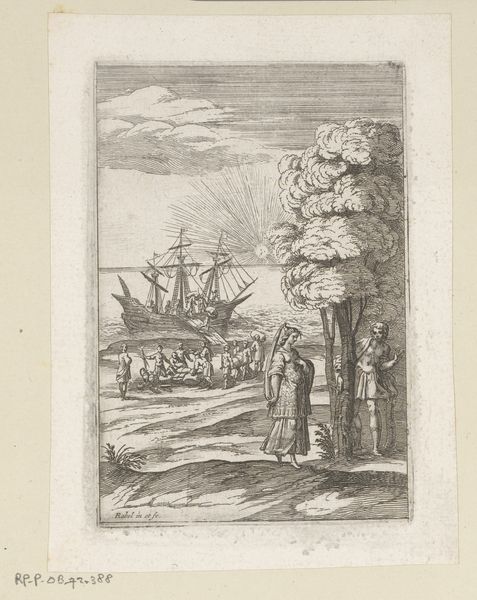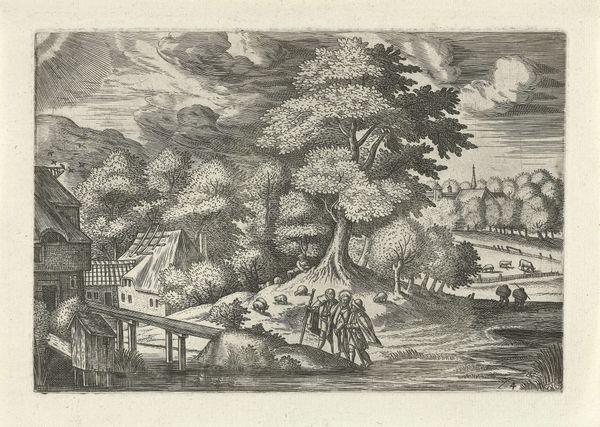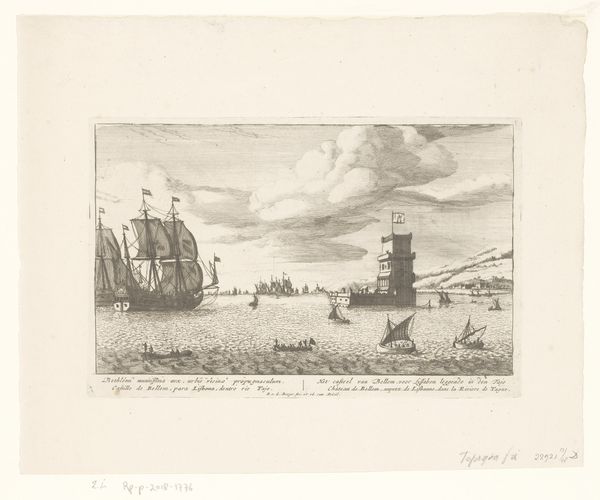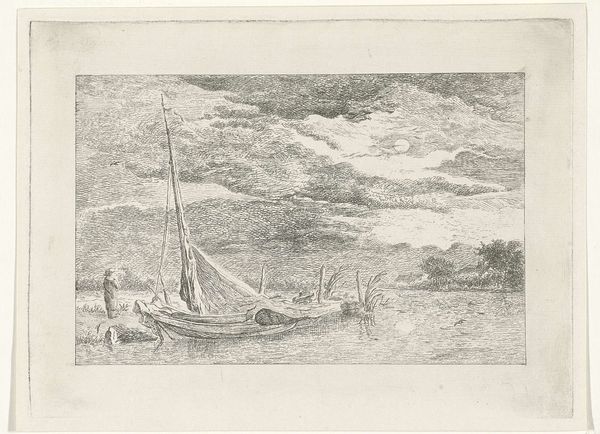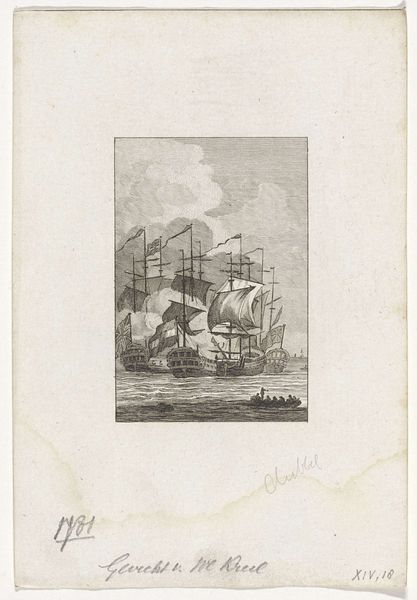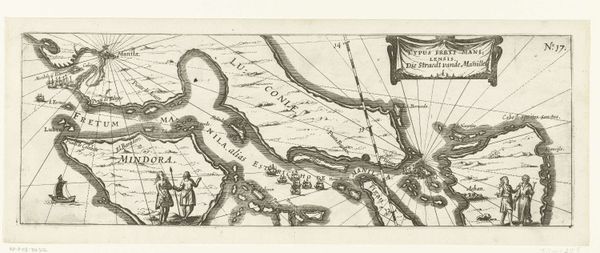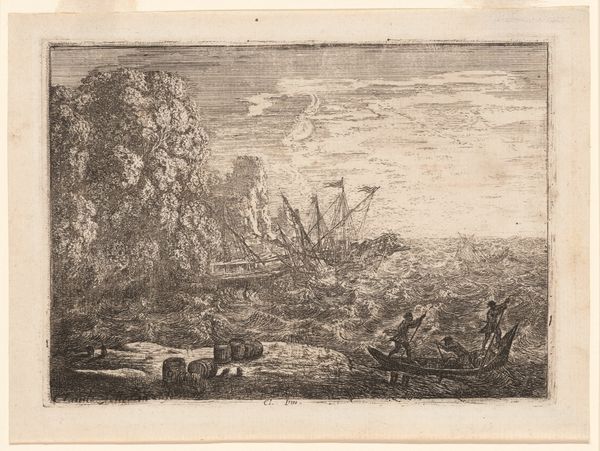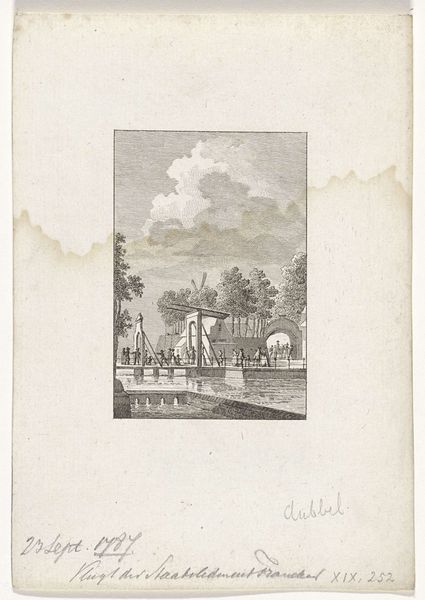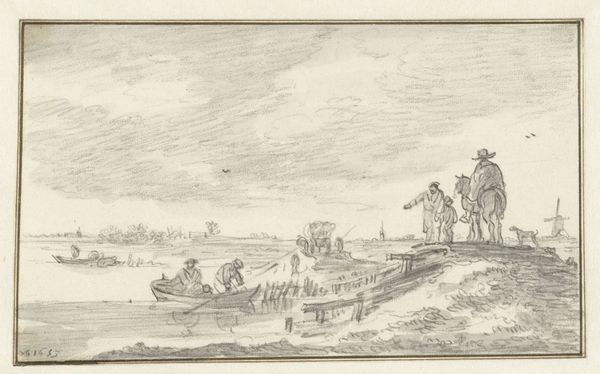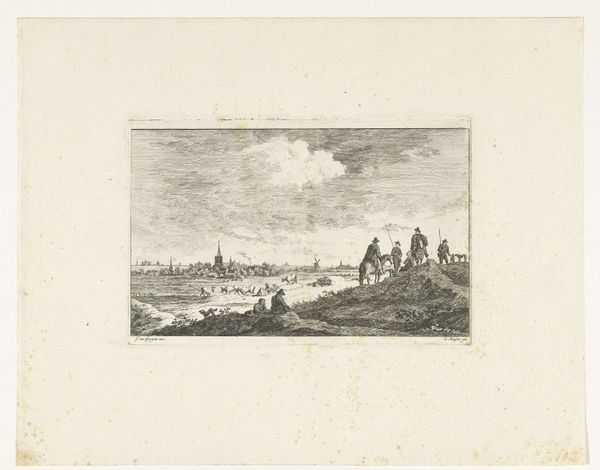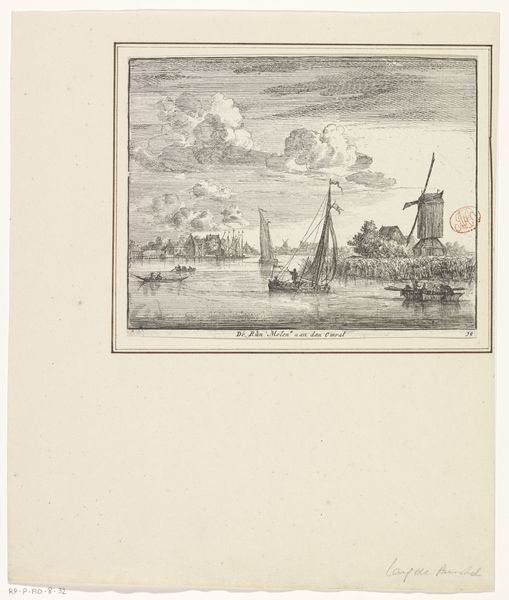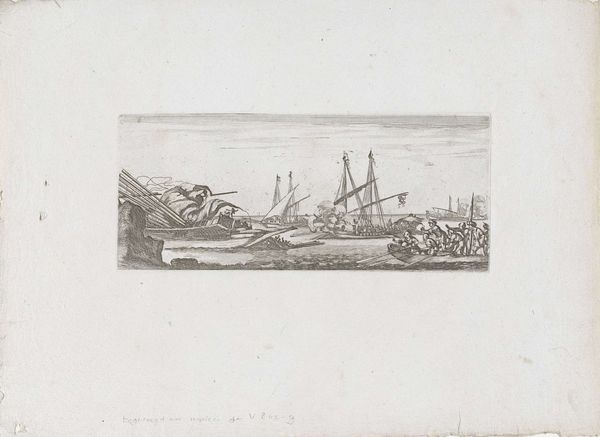
Dimensions: height 179 mm, width 136 mm
Copyright: Rijks Museum: Open Domain
Curator: Here we have "Zeeslag bij Doggersbank, 1781," an engraving created around 1781-1782. It’s on display here at the Rijksmuseum. Editor: My first impression is of organised chaos, I suppose! There's a sense of epic scale, with these rows of ships locked in this intense battle scene amidst the expanse of the sea. Curator: It depicts the Battle of Dogger Bank, a naval engagement during the Fourth Anglo-Dutch War. The Dutch Republic fought against Great Britain for trade routes and maritime power. What you're seeing is an attempt to represent a moment of national pride. Editor: Pride purchased at the price of immense violence. The artist portrays this event through the lens of power. Look at the meticulous detail in the rendering of the ships themselves – they seem almost romanticized despite the actual conflict, don't they? But consider how it might have impacted the working class, who are undoubtedly underrepresented here? Curator: Indeed. There is a definite heroic quality, almost Baroque, in its intensity, yet the engraving format lends it a certain accessibility, perhaps intended for wider distribution and consumption, influencing public perception. It becomes a piece of propaganda almost, visually narrating Dutch strength and resolve. Editor: That heroic framing certainly masks the human cost, doesn't it? It's as much about creating a national identity, and who it chooses to leave out of that project. Also, think about how different groups—merchant families or naval officers, the families who suffered losses—would have understood this artwork. Did they have similar perceptions, or was this artwork aimed toward a specific demographic, say, one of upper-class merchants? Curator: Well, given its accessibility, this print certainly circulated amongst a diverse public, though interpretations surely varied according to class and experience. It’s fascinating how this seemingly objective historical scene is really a complex negotiation of national pride, maritime power, and historical narrative. Editor: It serves as a strong reminder, even today, how easily these glorifying visuals can mask or justify political motivations and lived realities. This art is, ultimately, always rooted in political and social climates.
Comments
No comments
Be the first to comment and join the conversation on the ultimate creative platform.
